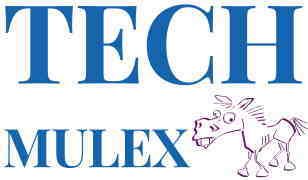What is Recycling?
Recycling is a process of converting waste materials into new products to prevent the waste of potentially useful materials. Instead of throwing away materials like plastic, glass, metals, and paper, the waste is collected and sent to recycling plants, where the materials are processed and turned into new products. Recycling is an essential aspect of waste management and conservation of natural resources. It helps to reduce the accumulation of waste in landfills and minimize the need for extraction of raw materials for the production of new items.
Why is Recycling Important?
Recycling plays a vital role in conserving the environment and natural resources. By reducing the amount of waste generated, recycling helps to protect wildlife habitats, reduces greenhouse gas emissions, and prevents pollution of air, water, and soil. Recycling also promotes sustainable development by creating new job opportunities and boosting the economy. It also reduces energy consumption and saves money on production costs.
Types of Recycling
There are various types of recycling, including paper, plastic, glass, metal, and electronic waste recycling. Paper recycling involves collecting used paper products and turning them into new paper products. Plastic recycling involves collecting used plastic items and converting them into new plastic products. Glass recycling involves collecting used glass bottles and jars and processing them to create new glass products. Metal recycling involves collecting used metal items and converting them into new metal products. Electronic waste recycling involves collecting and processing used electronic devices to extract valuable materials for reuse.
Benefits of Recycling
Recycling offers numerous benefits to individuals, communities, and the environment. Some of these benefits include:
– Reduces the amount of waste in landfills
– Conserves natural resources
– Saves energy and reduces greenhouse gas emissions
– Reduces pollution of air, water, and soil
– Boosts the economy and creates new job opportunities
– Saves money on production costs
How to Recycle at home
Recycling starts with simple steps you can take at home. The following are some tips on how to recycle at home:
– Separate recyclable materials from non-recyclable materials
– Rinse out food containers and remove bottle caps before recycling
– Flatten cardboard boxes to save space
– Bring recyclable items to the nearest recycling center
– Support recycling programs in your community
Recycling Myths
There are several myths surrounding recycling. Here are some common recycling myths debunked:
– Recycling is a waste of time and money – Recycling is an effective way to conserve natural resources and reduce waste in landfills.
– All plastics are recyclable – Not all types of plastics are recyclable. Make sure to check with the recycling center near you to know which types of plastics are accepted.
– It’s better to throw things away than recycle – Throwing things away contributes to the buildup of waste in landfills, while recycling helps to conserve natural resources and reduce waste.
– Recycling takes too much effort – Recycling is a simple and easy process that can be done by anyone. It starts with separating recyclable items from non-recyclable items and bringing them to the nearest recycling center.
FAQs
Q1. What items can be recycled?
A. Items that can be recycled include paper products, plastic items, glass bottles and jars, metal items, and electronic devices.
Q2. What are the benefits of recycling?
A. Recycling offers numerous benefits, including conservation of natural resources, reduction of waste in landfills, decrease in pollution of air, water, and soil, boost in the economy, and creation of new job opportunities.
Q3. What are the common recycling myths?
A. Common recycling myths include the belief that recycling is a waste of time and money, that all plastics are recyclable, and that throwing things away is better than recycling.
Q4. How can I recycle at home?
A. You can recycle at home by separating recyclable materials from non-recyclable materials, rinsing out food containers, bringing recyclable items to the nearest recycling center, and supporting recycling programs in your community.
Q5. How does recycling help to conserve natural resources?
A. Recycling helps to conserve natural resources by reducing the need for extraction of raw materials for the production of new products.
Q6. What are the types of recycling?
A. The types of recycling include paper, plastic, glass, metal, and electronic waste recycling.
Q7. Is recycling a difficult process?
A. Recycling is a simple and easy process that can be done by anyone. It starts with separating recyclable items from non-recyclable items and bringing them to the nearest recycling center.
Conclusion
Recycling is a simple yet powerful way to conserve natural resources, reduce waste, and promote sustainable development. It offers numerous benefits to individuals, communities, and the environment. Recycling starts with simple steps like separating recyclable items from non-recyclable items and bringing them to the nearest recycling center. By recycling, we can create a better future for ourselves and for future generations. Let’s all do our part in recycling and keeping our planet clean.
